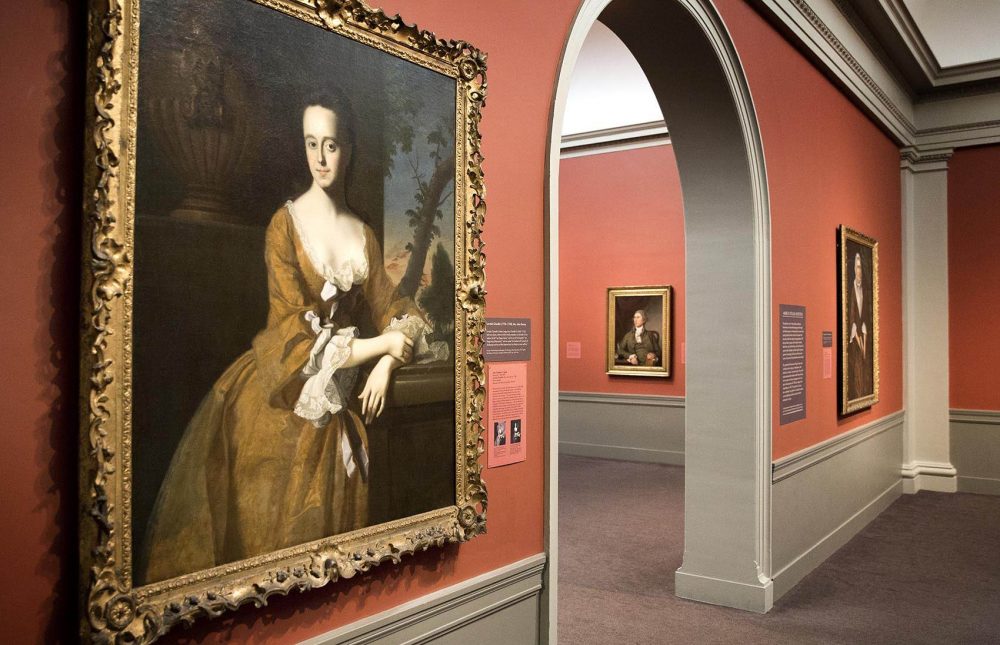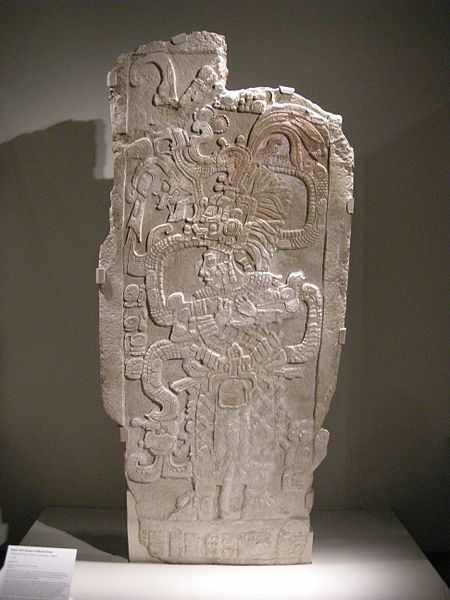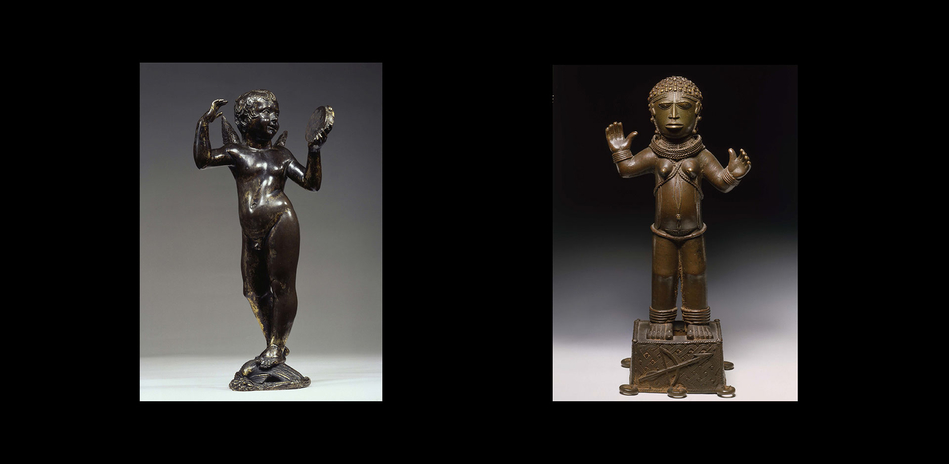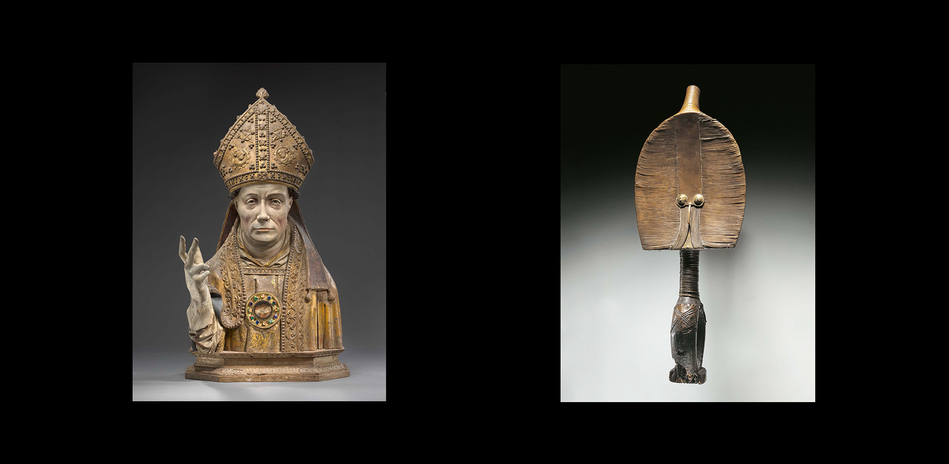I’ve been pondering the recent action of the Worcester Art Museum–to include information on new labels in its early American portrait gallery,about each sitter’s relationship with slavery, if any, ever since I first learned of it about six weeks ago. After reading many other opinions, I’ve now come to my own conclusion. I don’t agree with Worcester’s response to the problem, as such. If the museum felt the need to contextualize the portraits, I think there was a better, more fair way.
 Those of you who do not know what I’m talking about might read WBUR’s At the Worcester Art Museum, New Signs Tell Visitors Which Early American Subjects Benefited from Slavery. It begins with an anecdote about a portrait of Russell Sturgis, and continues:
Those of you who do not know what I’m talking about might read WBUR’s At the Worcester Art Museum, New Signs Tell Visitors Which Early American Subjects Benefited from Slavery. It begins with an anecdote about a portrait of Russell Sturgis, and continues:
A conventional sign next to the piece informs us that Gilbert Stuart, mostly known for painting George Washington’s portrait, painted Sturgis in 1822. A new sign above that, informs us that Sturgis’ relatives established a business in present-day Haiti that trafficked in flour, horses and enslaved persons.
Explaining that the labels were the work of the museum’s former curator of American Art, Elizabeth Athens, who is now at the National Gallery of Art, and were placed last fall, it continued:
After re-evaluating the permanent collection, she said she felt it almost unethical to allow the early American gallery to frame history with an uneven narrative that effaced people of color.
“It was exclusively wealthy, white people and they’re presented in this very kind of valorized way,” she said. “We were missing a whole swath of humanity that was part of American history. And I really wanted to correct that.”
She may be right about the need to “correct.” But I not think that individual–and darker–labels, placed more prominently than the labels about each work, was the right way to go. At the very least, the new labels should not have that primacy; they should be below.
Instead, I would propose one large wall text explaining the conditions of the time–not exonerating it–and implying that the wealth of many sitters in the gallery depended in some way on the slave trade. Right now, it seems the sitters are contextualized solely for that, which seems unfair.
In an article for Hyperallergic, Sarah E. Bond quotes Athens:
“the relabeling project helps point out that [enslaved persons] were very much there, even if we don’t see them visually depicted. This is also why I tried to identify enslaved people by name whenever possible.â€
Then she writes:
Historians of slavery like Orlando Patterson and others have noted the depersonalization that occurred in slave systems. Removing a person’s name was a means of erasing their identity and imposing a “social death†that transformed enslaved persons into property rather than living individuals. Both historians and museum professionals have begun to realize the need for revising the way we frame and label the past, and to support this movement within museums.
Deborah Whaley, a professor of American Studies and digital humanist at the University of Iowa, noted in an interview with Hyperallergic: “I think that foregrounding the accomplishments of some individuals in history has previously meant that acknowledging their complicated and racist past was ancillary. However, it is vital that we see historical figures in their complete complexity, even if it encompasses a hidden history that is antithetical to their democratic facade.
Yet by highlighting the slavery connection, isn’t Worcester doing the same thing to the sitters? Have the labels captured their complexity?
I also question the practice somewhat because it takes the emphasis off the art and puts it on history–but art museums are not the same as history museums, nor should they be.
David Lewis Schaefer, a political science professor, captured much of my sentiment in his recent letter to the editor of Worcester Magazine, which also wrote about the practice, which I quote in part:
Most museum visitors come to appreciate the work of great artists from various eras and civilizations, and (in the case of older or remote societies) learn something about the civilizations themselves. Normally, those now-obscure figures who typically sat for portraits are of no contemporary interest in themselves. But to highlight only their relation to slavery is to reduce them to stick figures, and the portraits to mere artifacts of propaganda.
Why should sitters’ relation to slavery be the only thing that matters about them? How many of them (or their spouses) fought in the American Revolution or Civil War? How many made valuable contributions to local civic, charitable, intellectual or cultural life, or to New England’s economic prosperity? Contrary to the curator, whatever one’s race or ethnicity, it is no more “interesting†or artistically relevant to learn how many slaves some sitter owned than to categorize sitters by their political or religious beliefs, their wealth, or their domestic situations.
I return to my proposed solution above: set the general scene in a wall text, not in individual labels. No, it’s not right to valorize these sitters; but it’s not right to condemn them without knowing more either.
And art museums are about art, not politics, not history.
Photo Credit:Â Courtesy WBUR
[Read more…] about The Worcester “Slavery” Label Controversy





